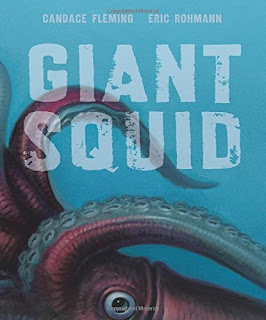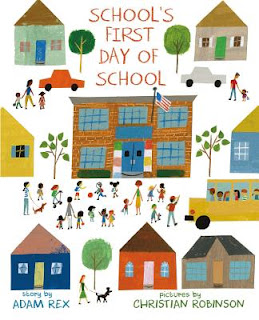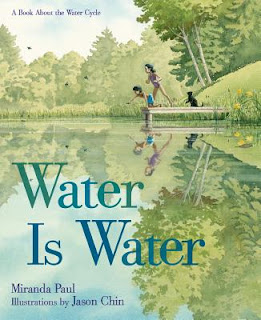new posts in all blogs
Viewing Blog: The Official SCBWI 10th Annual New York Conference Blog, Most Recent at Top
Results 51 - 75 of 1,119

ALICE POPE BLOGS LIVE FROM THE CONVENTION FLOOR AT THE HYATT GRAND CENTRAL, JANUARY 30-FEBRUARY 1
Statistics for The Official SCBWI 10th Annual New York Conference Blog
Number of Readers that added this blog to their MyJacketFlap: 11
.jpeg?picon=2287)
By: Lee Wind, M.Ed.,
on 7/29/2016
Blog:
The Official SCBWI 10th Annual New York Conference Blog
(
Login to Add to MyJacketFlap)
JacketFlap tags:
diversity,
Lisa Yee,
Don Tate,
john parra,
Pat Cummings,
Stacey Barney,
#WeNeedDiverseBooks,
#Diversity #WeNeedDiverseBooks #Summer Conference,
Add a tag
 |
| Right to Left: Pat Cummings, Stacey Barney, John Parra, Don Tate, and Lisa Yee |
In this discussion-based breakout session, we have multiple perspectives from different parts of the children's literature community:
Pat Cummings, author/illustrator of over thirty-five books for young readers (and Board member of SCBWI, the Authors Guild, and the Eric Carle Museum of Picture Book Art, among others.)
Stacey Barney, Senior Editor at Penguin/Putnam Books for Young Readers
John Parra, Golden-Kite winning illustrator.
Don Tate, author and illustrator, winner of the Ezra Jack Keats Award.
Lisa Yee, author of 16 books and winner of the very first Sid Fleischman Humor Award.
Some highlights:
Stacey Barney:
"Write organic stories." Sometimes she finds that it's almost as if writers are checking off boxes for diversity with their diverse cast of characters, but "character shouldn't feel like categories."
John Parra:
"Be respectful. Show it to others who are part of those communities. Make sure authentic is how it's portrayed."
Don Tate:
"Study. Research. Vet. ...Make sure you're not exploiting the topic."
Lisa Yee:
You can write outside your experience "but you have to get it right."
The panel are telling us fascinating stories, like Lisa sharing how her Millicent Min (in 2003) was the first middle grade book with a photo of an Asian American kid on the cover.
Don shares about doing a school visit when he was asked by a 5th grade class if he only illustrates Black people, and how he asked the two African American boys in the class if they felt like they've read books that represented them - and they said no. So he turned to the rest of the class and explained that he's made it his mission, he's built his whole career, to create positive portrayals of people that look like those two boys… and the whole class clapped.
Stacey tells us about teaching (elementary and preschool and high school), and reading picture books to the kids, and how she made an effort to choose picture books that reflected their experience. "Kids are kids."
Pat speaks of her school visits, and how kids pick up books out of curiosity. She shares how she was asked once by a British author why she only does books with Black characters. Pat countered, asking the British author why
they only created books with British characters…
John speaks of how he sees diverse books being published, but the awards and reviews and the best lists of the year aren't that diverse. After they've published, how do they get recognized and supported?
They cover editorial staffing (and the importance of diversity in staffing across departments, including marketing, publicity and sales), being vetted by additional experts, and much, much more.
Sara Sargent is an executive editor at HarperCollins Children's Books. She's published Deb Caletti, Jennifer Echols, Julie Cross, Aaron Karo and Martina Boone, and she acquires everything from picture books through young adult.
YA editors are wondering what's next when it comes to trends. Books that are hitting shelves today were acquired 12 to 24 months ago. It's true that you shouldn't write to trends. Today's trends will be over when your book comes out. Also, books that aren't written from the heart won't be as good.
"My list is only as good as the books you write."
Sara started at HC a year ago to develop books teens really want to read. She wanted to know what made teens tick, and what drives their purchasing habits. "What could I do to make sure the books I was publishing today reflected the teens of today?"
Publishers were publishing books for millennials and Gen Z—the one that follows millennials. Here's some marketing data:
- First generation to be majority nonwhite
- Average attention span is 8 seconds
- They use on average five devices (phone, laptop, desktop, tv, table)
- More tolerable of gender diversity than previous generations
It's good to research teens to understand what they want. There are a number of things to research: their music, their pop culture interests, their ideas about sex and identity, what they worry about, what their school lives are like (among many other things).
What makes her reject a manuscript?
One that feels like it's a book the authors are writing for the teens they were. You need to make it your business to know what would make a teen want to buy it.
Immerse yourself in teen culture. Watch a lot of YouTube. See what kids are watching. Read advertising industry articles. Subscribe to the AdWeek emails—they have lots of interesting articles on the topics. Download apps. Books are competing with other media for attention, and it's important to know your competition.
She creates separate social media accounts she uses to follow people. You can use it just for work to follow celebrities and such. See what they're talking about and how they're galvanizing their fans.
"We need to cozy up to our audience. We need to understand and know them, and—dare I say—love them."
What does cutting edge mean?
Among other things: Something that pushes the envelope as a taboo, something that experiments with form, something that makes adults uncomfortable, one that turns traditional relationships upside-down, one that portrays a broader set of experiences. "Innovative and pioneering. Those are great words."
Rethink storylines. Surprise her. "I know I'm reading something cutting edge when I can feel my brain carving a new path, rather than going on autopilot."
Something innovative builds on the pre-existing canon. "Read, read, and read some more."
You want to find a new way to express something universal.
Find her online at
sarasargent.wordpress.com and on
Twitter and
Instagram as @Sara_Sargent.
Kate Sullivan is Senior Editor at Delacorte Press. Kate share her picks.

Reka Simonsen, executive editor
at Atheneum Books for Young Readers

ENCHANTED AIR by Margarita Engle - This book shows how Engle became a writer and how she reconciled both sides of her cultural background to feel whole. "The writing is just gorgeous. It's moving. It makes me feel something. But it's very accessible and it's honest." Rena found Margarita in the slush pile years ago, and loved seeing how her writing developed.
THE WICKED AND THE JUST by J.A. Coats
"The best historical fiction feels relevant now." I think Jillian is really one of the best. She tells from both sides a story about colonialism and indigenous culture, and blends light and dark. The lightness in the book gives a way out of the darkness and she creates strong, well-drawn characters who are believable and understandable, even if you don't always like them. "Her writing just blows me away. She's another one of those people who's so smart you almost can't have a conversation with her without feeling a little overwhelmed."

GLASS SLIPPER GOLD SANDAL by Paul Fleischmann and Julie Paschkis
This has two things I love in one book: It's a multicultural approach to something familiar, and takes an incredible job with a story everyone knows, but also personalizes it for each culture. It shows readers there is more than one side of each story, and more than one way to tell a story. You can look at the world in many different ways. It also created amazing illustration opportunities.

Sara Sargent, executive editor at HarperCollins Children's Books
Sara chose three books to highlight.
CRUEL BEAUTY by Rosamund Hodge - a mashup of Beauty and the Beast with classical mythology. The world is complex and Sara and Rosamund had different ideas about resolving these things. "Where we ended up was such the perfect marriage of my editorial guidance ... and staying true to what she really wanted to do with the book."
She felt like it added something new to the canon of Beauty & the Beast retellings.
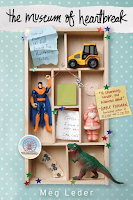
THE MUSEUM OF HEARTBREAK by Meg Leder
"There are a lot of reasons people become YA editors... I really love romance." This book made Sara feel understood like no other book had. That's a key reason people read YA. "There was something about this book that I absolutely couldn't pass up."
LAST YEAR'S MISTAKE by Gina Ciocca
She had to pass on the book. She was a new editor in her first job, and she couldn't get the rest of the team behind it. Two years later, she was at a new job and asked the agent, John Cusack, to send the manuscript again. They loved it, and the book became a huge lead title on the Simon Pulse list. (The process was agony for the author.)
"If you touch us in some way or inspire us, we don't forget about it, and we are the most die-hard champions of the things you write."
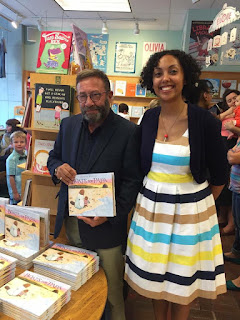 |
Neal with Jessixa Bagley at her book launch
(photo stolen from Jessixa's Facebook) |
Neal Porter of Neal Porter Books (an imprint of Roaring Brook Press/Macmillan) shares his three favorites:
__________________________________________
__________________________________________
__________________________________________
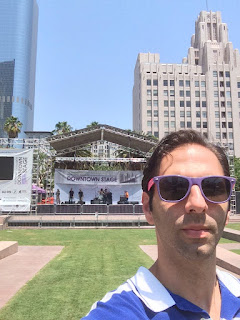 |
| Matt with a band, not his boy band. Photo stolen from Matt's Twitter feed. |
Matt Ringler of Scholastic has these three favorite books:
Two titles that Kat loved publishing:
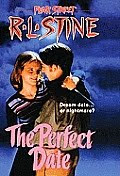
Fear Street series
R.L. Stein
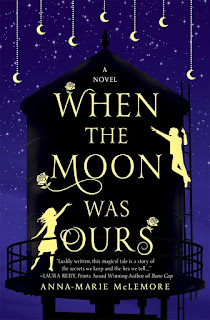
When the Moon was Ours
Anna Marie McLemore
Two titles that Stacey loved publishing:
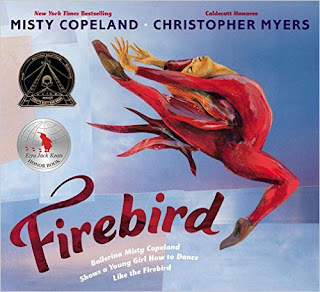
Ballerina Misty Copeland Shows a Young Girl How to Dance Like the Firebird
Kristin Levine
Heather Bouwman
A dive into what the editors really love (and acquired!)
Alvina Ling is VP and Editor-in-Chief at Little, Brown Books for Young Readers where she’s worked since 1999. She oversees Little, Brown’s core publishing program (including picture book, middle grade, and young adult), and edits children's books for all ages. She has worked with such authors and illustrators as Peter Brown, Bryan Collier, Ed Young, Grace Lin, Wendy Mass, Justina Chen, Chris Colfer, Laini Taylor, Libba Bray, Barry Lyga, Holly Black, and Matthew Quick. She is the co-founder and former chair of the CBC Diversity Committee. She is on Twitter as @planetalvina.
The books Alvina shares about are:
For Picture Books, "Thunder Boy, Jr." by Sherman Alexie, illustrated by Yuyi Morales

for middle grade, "The Year of the Dog" by Grace Lin

And for YA, "Daughter of Smoke and Bone" by Laini Taylor

Melissa Manlove is an Editor at Chronicle Books in San Francisco. She has been with Chronicle for 12 years. Her acquisitions tend to be all ages in nonfiction; ages 0-8 for fiction. When acquiring, she looks for fresh takes on familiar topics as well as the new and unusual. An effective approach and strong, graceful writing are important to her. She has 17 years of children’s bookselling experience.
Melissa's books she shares with us - and the stories behind them - are:
"Picture This" by Molly Bang

"President Squid" by Aaron Reynolds, illustrated by Sara Varon

.jpeg?picon=2287)
By: Lee Wind, M.Ed.,
on 7/29/2016
Blog:
The Official SCBWI 10th Annual New York Conference Blog
(
Login to Add to MyJacketFlap)
JacketFlap tags:
alvina ling,
Stacey Barney,
Reka Simonsen,
Emma Dryden,
Neal Porter,
Melissa Manlove,
Sara Sargent,
Kat Brzozowski,
Matt Ringler,
Kate Sulivan,
Add a tag
Moderated by Emma Dryden (standing, far left), the panel shares three books that they acquired (and why):
Seated, from Left to Right:Stacey Barney, Senior Editor (G.P. Putnam's Sons/Penguin)
Kat Brzozowski, Associate Editor (St. Martin's)
Alvina Ling, V.P. and Editor in Chief (Little, Brown)
Melissa Manlove, Editor (Chronicle)
Neal Porter, Publisher (Neal Porter Books)
Matt Ringler, Senior Editor (Scholastic)
Sara Sargent, Executive Edtior (Harper Collins)
Reka Simonsen, Executive Editor (Atheneum)
Kate Sullivan, Senior Editor (Delacorte)
Neal Porter is the publisher of the Neal Porter Books imprint of Roaring Brook Press. He has been in the book publishing business for decades. His work has spanned both the editorial process and the marketing departments of the industry. Neal has worked with a number of Caldecott Medal–honored illustrators, including Eric Rohmann, Ted Lewin, Laura Vaccaro Seeger, and the 2011 Caldecott Medal winner, Erin Stead, in her book A Sick Day for Amos McGee. He received an Eric Carle Honor in the category of Mentor in 2015.
Neal starts off his breakout session by saying that he's actually re-named his speech, "Three Reasons I Love SCBWI"
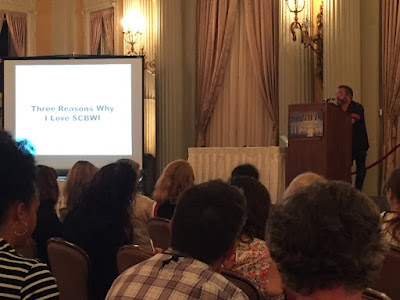
And tells us in some depth about publishing "The Iridescence of Birds," a picture book about Henri Matisse, written by Patricia MacLachlan and illustrated by Hadley Hooper. (The SCBWI connection? He and Patricia we speaking about it at a SCBWI Summer Conference and when he asked her what she was working on, she said 'I just wrote a picture book no one will ever publish.) Well, Neal did!
He also describes the story behind his publishing Antoinette Portis' "Best Frints in the Whole Universe."
Antoinette is actually in the audience, and Neal calls her up to to do a short interview within the session, which is proceeded by Antoinette reading it out loud to us… They discuss some of the editing process for the book - about the emotional exchange between the characters and some of the story beats.
Neal finishes his presentation about books he discovered at SCBWI and then published with Miranda Paul's "Water is Water" (he met Miranda at a 2012 SCBWI conference critique.)
Miranda is also in the audience, and Neal calls her up as well! They discuss the process and evolution of the rhyming nonfiction picture book. Neal shares Miranda's cover letter that she submitted with the manuscript, and he tells us his ultimate litmus test, the question he asks himself all the time:
"Do I have to publish this book?"
In all three of these cases, the answer was YES.
Four industry stars with four different points of view talked to us about groundbreaking nonfiction.
- Steve Malk is a literary agent at Writers House, representing some of the biggest names in the business.
- Susan Campbell Bartoletti writes poetry, short stories, picture books, and novels and nonfiction for young readers.
- Linda Sue Park is a Newbery Award winner (for A SINGLE SHARD), and the author of a NYT bestseller called A LONG WALK TO WATER as well as WING & CLAW and YAKS YAK.
- Elizabeth Partridge has written more than a dozen books, including MARCHING FOR FREEDOM and biographies of Woody Guthrie and Dorothea Lange.
Susan Campbell Bartlett's career opened up when she started to do nonfiction. She learned everything she needed to know about nonfiction in a great 11th-grade English class: taking notes, research, writing. She's written about growing up in coal country, Hitler youth, the Irish potato famine, and the Ku Klux Klan, and Typhoid Mary.
Some of the best advice she's ever received, from Patti Lee Gauch, is to reach inside of yourself and find a personal story.
Linda Sue Park loves writing historical fiction, and she loves grounding it and basing it in fact. She writes stories like she cooks: there is no recipe. Her tinkering, especially with real life events she works into her books, makes the narratives better. She ended up writing fiction because she loves to change things.
A LONG WALK TO WATER is one of her mashups. It's historical fiction based on the true story of a friend of hers who was one of the Lost Boys of Sudan. She interviewed her friend for hours and read his own writing. But the part of his life that she was writing about happened more than 20 years ago, so to make it a dramatic narrative, she wrote in scenes and added dialogue. Even though she interviewed him and got quotes from him, she considers the reproduction fiction. It's recreated from old conversations, and she doesn't think it's truly nonfiction to work this way.
Linda Sue also makes composite characters out of multiple people. Their stories are true, but the combination makes it fiction. Readers have been moved by the book nonetheless, and have raised more than $1.5 million for a water charity in Sudan. The realness of the book is what resonates with readers.
She's working on a mashup with several authors, including Jennifer Donnelly, M.T. Anderson, Candace Fleming and others about Henry VIII. It's called FATAL THRONE and will be out sometime after next fall.
Elizabeth Partridge loves to write biographies. She likes characters who are difficult. This gives grit and multiple layers to work. MARCHING FOR FREEDOM was a challenging book to write because her main characters were all earnest, hardworking, amazing kids and young adults. It's about the march from Selma to Montgomery in 1965, and she wanted to choose a new POV from Martin Luther King Jr's. She found photographs of kids who'd participated in marches and tried to find names of people to interview.
A New Yorker article led her to some kids who'd taken part, and before long, she'd found six or seven kids, whom she interviewed in Selma. "If I wanted this to remain nonfiction, I would have to quote them exactly."
Steven Malk has always loved nonfiction. He was a history major in college, and when he gets to read away from work, he reads all nonfiction. Nonfiction has morphed and taken on a broader definition. There's room for more voices. "It's an interesting time." He talked about Deborah Wiles documentary novels REVOLUTION and COUNTDOWN. "She's doing something very unique."
Other writers/artists to watch are Deborah Hopkinson, Kadir Nelson, Eugene Yelchin and Matt dela Pena, Stephanie Hemphill (and more—he's an encyclopedia of books and creators).
He likes it when books open up conversations about what's fiction and nonfiction. He's a bit looser about it. As long as people are reading, that's a good thing. He grew up in his parents' bookstore, and wasn't snobby about what people were reading.
What's the line between fiction and nonfiction?
Susan Bartoletti -
a book like TERRIBLE TYPHOID MARY is nonfiction. When Mary is thinking, Susan couches it in "might have thought." -
Linda Sue Park - "Facts don't interest me very much. I'm interested in truth." Facts are one tool to getting at the truth. At a Library of Congress event she met a man who wanted to read only fiction, because all nonfiction becomes untrue with future discoveries. This fascinated her, even as she depends on nonfiction writers' work to do their own.
Elizabeth Partridge - She has a hard line between fiction and nonfiction. "I will not make up anything. I will twist myself in knots to not make up something." The weather can be particularly difficult. But she's loving the mashups that are getting more and more out there. She loves how in LOVING VS VIRGINIA the author went inside the characters' heads and told the story in poetry.
"We think of nonfiction of being dry and dates and names and places. But if you can find the emotional spine of your book, it will be
powerful."
Steve Malk - You need to own what you're doing. You can't say it's nonfiction if you're making up dialogue. If you say you're writing nonfiction but you don't have sources and you're making things up, it makes you look unprofessional. You need to be very clear to an agent or publisher what you're trying to do. Authors notes and backwater can be helpful, but you have to be able to articulate it for yourself when you are submitting. Don't leave that up to the publisher.
We're also starting to see nonfiction back matter in fiction books, Susan said. That's an interesting mashup.
You have to be honest with yourself about your research and what you're writing. You can't rely on your publisher to vet your work.
"If you're passionate for your topic, you want to get it right. You would be unsatisfied fudging it," Linda Sue said.
Four industry stars with four different points of view talked to us about groundbreaking nonfiction.
- Steve Malk is a literary agent at Writers House, representing some of the biggest names in the business.
- Susan Campbell Bartoletti writes poetry, short stories, picture books, and novels and nonfiction for young readers.
- Linda Sue Park is a Newbery Award winner (for A SINGLE SHARD), and the author of a NYT bestseller called A LONG WALK TO WATER as well as WING & CLAW and YAKS YAK.
- Elizabeth Partridge has written more than a dozen books, including MARCHING FOR FREEDOM and biographies of Woody Guthrie and Dorothea Lange.
Susan Campbell Bartlett's career opened up when she started to do nonfiction. She learned everything she needed to know about nonfiction in a great 11th-grade English class: taking notes, research, writing. She's written about growing up in coal country, Hitler youth, the Irish potato famine, and the Ku Klux Klan, and Typhoid Mary.
Some of the best advice she's ever received, from Patti Lee Gauch, is to reach inside of yourself and find a personal story.
Linda Sue Park loves writing historical fiction, and she loves grounding it and basing it in fact. She writes stories like she cooks: there is no recipe. Her tinkering, especially with real life events she works into her books, makes the narratives better. She ended up writing fiction because she loves to change things.
A LONG WALK TO WATER is one of her mashups. It's historical fiction based on the true story of a friend of hers who was one of the Lost Boys of Sudan. She interviewed her friend for hours and read his own writing. But the part of his life that she was writing about happened more than 20 years ago, so to make it a dramatic narrative, she wrote in scenes and added dialogue. Even though she interviewed him and got quotes from him, she considers the reproduction fiction. It's recreated from old conversations, and she doesn't think it's truly nonfiction to work this way.
Linda Sue also makes composite characters out of multiple people. Their stories are true, but the combination makes it fiction. Readers have been moved by the book nonetheless, and have raised more than $1.5 million for a water charity in Sudan. The realness of the book is what resonates with readers.
She's working on a mashup with several authors, including Jennifer Donnelly, M.T. Anderson, Candace Fleming and others about Henry VIII. It's called FATAL THRONE and will be out sometime after next fall.
Elizabeth Partridge loves to write biographies. She likes characters who are difficult. This gives grit and multiple layers to work. MARCHING FOR FREEDOM was a challenging book to write because her main characters were all earnest, hardworking, amazing kids and young adults. It's about the march from Selma to Montgomery in 1965, and she wanted to choose a new POV from Martin Luther King Jr's. She found photographs of kids who'd participated in marches and tried to find names of people to interview.
A New Yorker article led her to some kids who'd taken part, and before long, she'd found six or seven kids, whom she interviewed in Selma. "If I wanted this to remain nonfiction, I would have to quote them exactly."
Steven Malk has always loved nonfiction. He was a history major in college, and when he gets to read away from work, he reads all nonfiction. Nonfiction has morphed and taken on a broader definition. There's room for more voices. "It's an interesting time." He talked about Deborah Wiles documentary novels REVOLUTION and COUNTDOWN. "She's doing something very unique."
Other writers/artists to watch are Deborah Hopkinson, Kadir Nelson, Eugene Yelchin and Matt dela Pena, Stephanie Hemphill (and more—he's an encyclopedia of books and creators).
He likes it when books open up conversations about what's fiction and nonfiction. He's a bit looser about it. As long as people are reading, that's a good thing. He grew up in his parents' bookstore, and wasn't snobby about what people were reading.
What's the line between fiction and nonfiction?
Susan Bartoletti -
a book like TERRIBLE TYPHOID MARY is nonfiction. When Mary is thinking, Susan couches it in "might have thought." -
Linda Sue Park - "Facts don't interest me very much. I'm interested in truth." Facts are one tool to getting at the truth. At a Library of Congress event she met a man who wanted to read only fiction, because all nonfiction becomes untrue with future discoveries. This fascinated her, even as she depends on nonfiction writers' work to do their own.
Elizabeth Partridge - She has a hard line between fiction and nonfiction. "I will not make up anything. I will twist myself in knots to not make up something." The weather can be particularly difficult. But she's loving the mashups that are getting more and more out there. She loves how in LOVING VS VIRGINIA the author went inside the characters' heads and told the story in poetry.
"We think of nonfiction of being dry and dates and names and places. But if you can find the emotional spine of your book, it will be
powerful."
Steve Malk - You need to own what you're doing. You can't say it's nonfiction if you're making up dialogue. If you say you're writing nonfiction but you don't have sources and you're making things up, it makes you look unprofessional. You need to be very clear to an agent or publisher what you're trying to do. Authors notes and backwater can be helpful, but you have to be able to articulate it for yourself when you are submitting. Don't leave that up to the publisher.
We're also starting to see nonfiction back matter in fiction books, Susan said. That's an interesting mashup.
You have to be honest with yourself about your research and what you're writing. You can't rely on your publisher to vet your work.
"If you're passionate for your topic, you want to get it right. You would be unsatisfied fudging it," Linda Sue said.
 |
| Justin Chanda presents his keynote address at #LA16SCBWI |
Justin Chanda is Vice President & Publisher of the four flagship children's imprints at Simon & Schuster: S&S Books for Young Readers, McElderry Books, Atheneum, and the new Salaam Reads. He oversees the publication of two hundred and fifty titles per year ranging from the youngest picture book to the edgiest YA. Justin continues to edit, working with the likes of Jon Sciezka, Loren Long, Kenneth Oppel, Patricia MacLachlan, Peter Brown, Michael Ian Black, Karma Wilson, Dan Krall, Morgan Matson, Mike Lupica, and Debbie Ohi. He is also the publisher of Saga press, a newly minted adult Sci-Fi-/Fantasy imprint. Follow him on Twitter @jpchandaSome highlights from Justin's upbeat speech...
Justin covers statistics:
•Children's print books are up over last year
•Teen title sales (especially ebook sales) are down
•2015-2016 have been terrific years for Indie Bookstores
Justin covers trends:
"Trends are the mortal enemy of authentic writing"
#EndTheTrend
And offers some excellent advice:
"The story comes first.
Your story, authentically told, in your own way."
His keynote discusses so much more, including the role of teachers and librarians who "are on the front lines of…getting the right book to the right kid." And how blockbusters "are not the true measure of a book's worth - nor should they be."
Final quote to share, from Justin's significant focus on diversity and how it is so necessary and needed in children's literature:
"Variety is the the true business of children's books, and business remains good."
Just prior to the conference opening, I had the pleasure of welcoming those attending for the first time.
Suddenly, we all have a few hundred new friends. If ever you've been worried about attending this conference for first time, know that you are not alone and you will be welcomed.
Thanks for the great morning, new friends. #bird
You know and love his delightful picture book,
The Day the Crayons Quit, and its sequel, but did you know that Drew spent years working in film, particularly horror films?
Maybe because he grew up in a haunted house in western Ohio?He has the pictures to prove it! (They are very good photos.) Besides domestic hauntings, Drew saw
STAR WARS when he was 7 and knew at that moment he wanted to make stories for the screen. He went to Emerson College and became a film major... But he happened to take a writing class from Jack Gantos (!) who told Drew he had a voice for kid's books. But Drew didn't listen. Yet.
Eventually he DID start writing for kids, on TV shows like
Buzz Lightyear and
Timon and Pumbaa.
But the world of Hollywood and screenwriting is pretty cutthroat and in a down moment, Drew gave writing a non-screen story a try and was looking around his office for inspiration when he saw something. He still has the box of crayons that inspired hims to write
The Day the Crayons Quit, a box that was magically on his adult man desk with his other, adult man office supplies.
It may seem like Drew's NYT Bestseller List success was overnight, but like most overnight successes, it took ten years: In 2003 he submitted the manuscript to his agent, a manuscript which did not get picked up until 2009, and which was finally published in 2013.
The librarian who asked Drew to do his first school visit is in the audience! He loved the experience so much, and the children's book industry is so unlike the butt-kicking world of screenwriting, that he's very much embraced his new found title as Children's Book Writer. Drew loves that the children's book industry takes stands, finds the meaningful in the meaningless.
Some final quotes from Drew:
"Every story has been told, that's what you hear every day in Hollywood and here, but it's your story that matters, your voice—your princess story, your pirate story..."
"When you write something and you hand it to something, it's like standing there, buck naked saying, 'HEY! You like it?'"
Thanks, Drew, we like it!
Pam Muñoz Ryan is one of the most lauded writers in the business. Her most recent book, ECHO, was a Newbery Honor and the winner of the Kirkus Prize.
"What do any of us have to share, really, other than our own truths?"
Pam talked to us about her path into writing. She didn't realize, at first, the people
could be authors. She worked as a teacher first. "As a writer, I was a very late bloomer."
She published her first children's book when she was 43, and she was not an overnight success. Learning to embrace failure is vital—this was among the first of the confessions she shared with us about her life as a writer.
"Any success I've had in publishing is the tip of the iceberg of accumulated failures," she said.
"This profession is often frustrating work. But let's face if. If you are not struggling to achieve something in your life, if nothing is a challenge ... then you're setting your goals much too low."
When she was a child reader, she didn't know that her story wasn't represented in books. She wasn't self actualized enough. But her life might have been changed had she seen her own diverse background represented in a book. She hears from readers who are Latino and from those who aren't who are so glad to see Latino characters in books.
Censorship is still a surprise to her. "I never thought I'd be censored. I was wrong." ESPERANZA RISING has been censored, and even though it's been in print for years, people are still trying to ban it. The content was called "contentious, unacceptable, and dangerous" by a parent watchdog group. Kids have to get a signed permission slip from their parents before they can read the book. (Rita Williams Garcia was also targeted.)
Some other confessions: She doesn't keep a journal. She doesn't blog (though she loves reading them). Not doing this sort of thing makes her feel guilty.
She also doesn't keep track of how many drafts she writes, how long her manuscripts are, or how many times she works in a day. She can't distinguish the writing and revision. "It's all revision," she said.
Nor does she have a muse. Momentum is far more important than inspiration. "I know where to find momentum. It's there, in the revisiting, day after day, the failing and starting over. It's there in the re-reading and rewriting."
Another confession: She doesn't write every day. She schedules her life so that there is time for "Mr. Writing." But sometimes, life doesn't allow that. "Like Ross and Rachel, we take a little break."
And finally, she has one agenda when she sits down to write. Consciously, she has an agenda, and one agenda only. "My most ardent rule, my intention and my hope ... is this. I want the reader to want to turn the page."
Pam Munoz Ryan Follow Pam on Twitter.
Lin Oliver kicks off the #LA16SCBWI conference by sharing with us all about the 952 attendees - 1/3 published, repping 47 states and 15 countries
She then introduces the conference faculty, who parade in to "We Are The Champions" and then share their words: one word, designed to inspire…
Here's a taste...
Neal Schusterman: Epiphany
Emma Dryden: Empathy
Justin Chanda: Inclusivity
Stacey Barney: Perseverance
Bonnie Bader: Hook
Peter Brown: Awk-ward!
Ellen Hopkins: Metamorphosis
Alvina Ling: Breathe
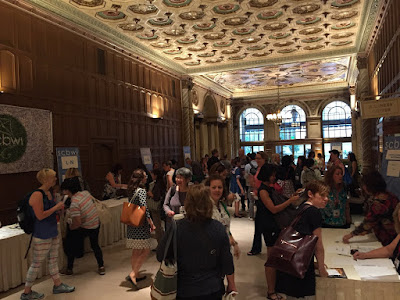 |
| The art deco goodness surrounds the check-in desks |
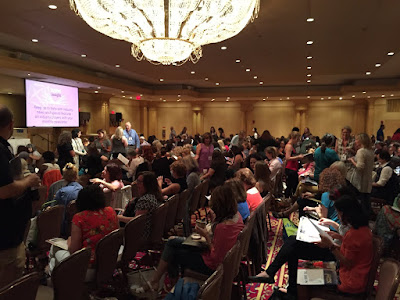 |
| Everyone taking their seats |
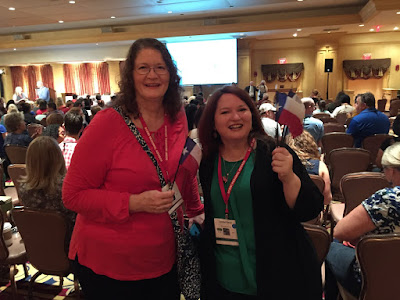 |
| The Texas Regional Team with flags! |
As I write this, we're just days away from #LA16SCBWI
It's going to be amazing!
If you're not lucky enough to attend this time around, remember to follow along on social media (the hashtag is
#LA16SCBWI) and
here on this blog.
Here's to all the inspiration, craft, business, opportunity and community ahead!
Illustrate and Write On,Lee
In particular, the intensives are filling up!
You'll have to jump on it to get a space in the Illustrator's Intensive,
CHARACTER BUILDING
Developing a Believable and Engaging Cast for Your Picture Book
With the day’s faculty: Sophie Blackall Author/Illustrator, Peter Brown Author/Illustrator, Priscilla Burris Author/Illustrator, Pat Cummings Illustrator, David Diaz Illustrator, Laurent Linn Art Director, Simon & Schuster, Cecilia Yung Art Director Art Director & Vice President, Penguin BFYR, and Paul Zelinsky Illustrator
It's a full day drawing session. Bring drawing material and a 8-1/2” x 11" pad and tracing paper!
And there are just a few spots left in these craft intensives,
School Visits – the Crash Course, with Suzanne Morgan Williams Author / Bruce Hale Author (All Day)
In this hands-on intensive, Bruce Hale and Suzanne Morgan Williams coach you in taking your school/library presentation to the next level. They’ll cover planning, marketing, performance, curriculum tie-ins, and everything in between. You’ll even be videotaped and receive feedback on a brief excerpt from your presentation. Assignment: Please bring a five-minute talk to share, plus: your latest book (or ARC), any marketing materials, and a prop (small enough to fit in a shoebox) that represents you and your work.
Supplementing Your Writing Income, with Bonnie Bader, SCBWI PAL Advisor (Morning)
Are you in between projects, or waiting for a contract? This class will give you concrete ways to supplement your writing and illustrating income. Learn how to get writer/illustrator work-for-hire, and come away with a list of publishers to contact for work. In class exercises include writing query letters, writing to a publisher's specifications, and more!
Novel Writing: Soup to Nuts with Stacey Barney, Senior Editor, Penguin/Putnam (Morning)
In this session, Stacey Barney will guide you through a comprehensive overview of novel writing devices. It's always helpful to bring a work-in-progress so that you can apply each technique and device to your own work during the discussion. Stacey brings her editorial expertise to help each participant discover what is working with their manuscript and what can be improved.
Writing Voice – Speak Up, I Can’t Hear You, with Kat Brzozowski, Editor, St. Martin's (Morning)
You’ve come up with a plot. You’ve created characters. You have a setting. Now how do you make your readers feel like these characters are really speaking to them? Voice is one of the most important elements of fiction and one of the hardest to master. In this session, we’ll work hands on to improve voice in fiction, with a focus on young adult fiction (and techniques that also apply to middle grade). By reading and discussing how authors create voice on the page and working on our own writing to sharpen our voice, this session focuses on writing that really brings your characters’ individual personalities to life.
The Ins and Outs of Writing Middle Grade Fantasy, with Bruce Coville, Author (Morning)
The session begins with an "annotated storytelling" that will analyze a piece of fantasy writing from the macro to the micro—discussing everything from mythic structure down to the reasons for specific metaphors and word choices. Then we'll examine ten specific tactics to employ while writing middle grade fantasy. We'll conclude with some critiquing, as time allows. Assignment: Please bring a work-in-progress.
Crafting Your Novel’s Narrative: The basics of structure, voice, character, and plot, with Alvina Ling, VP & Editor-in-Chief, Little, Brown (Morning)
Whether you’re just starting out, or in the revision stage of your novel, this intensive will give an overview of the four basic elements of your narrative. This workshop also aims to help you work through and brainstorm around any specific issues your having with your novel’s narrative. Assignment: bring an issue you’re having in your work-in-progress that deals with either structure, voice, character, or plot to discuss and talk through with the group. Optional: Read both Where the Mountain Meets the Moon and Starry River of the Sky by Grace Lin.
Revising and Re-Imagining Your Picture Book, with Harold Underdown, Publishing Consultant (Morning)
Picture books are so simple, but often need to be revised or even re-imagined many times before they are just right. Drawing on our years of experience as independent editors, and in-house children’s book editors in New York before that, Eileen Robinson and I developed this workshop to help writers do just that. This workshop will teach you techniques to enable you to find problems with your picture book manuscript, reshape it, even re-imagine it, and then polish it before you send it out.
Poetry: From Picture Books to Verse Novels, with Carole Boston Weatherford, Author/Poet (Morning)
Examine how narratives unfold through poetry. Consider how poets choose language, channel voices, evoke settings and use structure. Practice creating tableaux, experimenting with structure and writing from different points of view.
Put Your Best Foot Forward: Looking at that crucial first page, and making it better, with Victoria Wells Arms, Agent, Victoria Wells Arms Literary (Afternoon)
Sometimes writers start in just the right place, and sometimes the best opening line or scene is hiding on page 27. Some authors seem to think a prologue is the only way to really get their point across. How are you going to hook that reader–any reader–into dying to know more? In this three-hour intensive, Victoria Wells Arms, former editorial director now agent will look at both your first page, and the place you think might actually be a better first page, and we will discuss the various options in how you start a novel (chapter books thru YA, no picture books here). Assignment: Send in the first two pages of your current work-in-progress to [email protected], and, if you like, the other place that you think might be an alternative starting place, two additional pages max so I can read ahead of time. We are going to have to stick to 5 mins total for each participant.
Build Your Social Media Presence, with Martha Brockenbrough, Author (Afternoon)
Learn the differences between Twitter, Facebook, Instagram, and Tumblr, and get down to the brass tacks of how you can use each to: build authentic relationships with a variety of readers and power connectors; increase your platform without increasing your workload; and share your books without clobbering people over the head with tone-deaf marketing messages. We’ll focus on best practices for each social media platform, tools you can use to create images that resonate, and website platforms that let you integrate all of it seamlessly. Assignment: Please bring a laptop and 2-3 favorite quotes from your books or about writing.
Why Did You Do That?: Creating Strong Characters to Push Your Plot Forward, with Matt Ringler, Senior Editor, Scholastic (Afternoon)
In this intensive we will take a close look at character motivation through dialogue and back story and how to use that to advance your plot. Will include several (fun!) writing exercises. Assignment: Please come with three characters from books, television, or movies that you find to be particularly strong (whether you love them or hate them!)
Revising Your Chapter Book or Novel, with Harold Underdown, Publishing Consultant (Afternoon)
What happens after you write your first draft of a novel or chapter book can be the most important and most difficult part of the writing process. Based on my own work with writers, this workshop teaches proven techniques to get useful feedback and others, dig into "big picture" problems with your manuscript, and refine it at the sentence level.
It's going to be an amazing conference, and the intensives promise to be game-changers for your craft and career.
You'll find registration and all the other conference info here.We hope to see you at #LA16SCBWI!
(Cross-posted at scbwi.blogspot.com)
We're so excited!
The SCBWI Summer Conference is packed with:
Keynotes
and inspiration,Agents and Editors and Panels
and insightBreakout sessions on the
craft and
business of writing and illustrating for kids and teens,
Optional classroom-sized
intensives with the amazing Conference Faculty (a who's who of children's literature!)
Optional one-on-one
manuscript critiques and
portfolio critiques for feedback from a publishing professional.
The
Portfolio Showcase gives you an opportunity to display your work to faculty and participants alike. Come and be discovered!
The
Golden Kite Awards Cocktail Reception and Dinner
Illustrator, International, and nonfiction
socials and the LGBTQ & Allies
Q&A
A PAL
Booksale,
Autograph party, even yoga,
And the conference gala...
The Red Carpet Ball!So bring your Hollywood Glamour, sense of career adventure, and dive into all the craft, business, inspiration, opportunity and community that the SCBWI Summer Conference has to offer.
You'll find all the information and registration here. We hope to see you there!
Illustrate and Write On,Lee
.jpeg?picon=2287)
By: Lee Wind, M.Ed.,
on 2/14/2016
Blog:
The Official SCBWI 10th Annual New York Conference Blog
(
Login to Add to MyJacketFlap)
JacketFlap tags:
#LA16SCBWI,
Don Tate,
Jaime Temairik,
Martha Brockenbrough,
Jolie Stekly,
Lee Wind,
SCBWI TEAM BLOG,
#NY16SCBWI,
Add a tag
 |
| SCBWI Team Blog, left to right: Lee Wind, Jaime Temairik, Jolie Stekly, Don Tate, and Martha Brockenbrough |
What a conference!
We hope you'll join us for all the inspiration, craft, business, opportunity and community of the 45th Annual SCBWI Summer Conference in Los Angeles, July 29 - August 1, 2016.
SCBWI Team Blog
Lee, Jaime, Jolie, Martha and Don
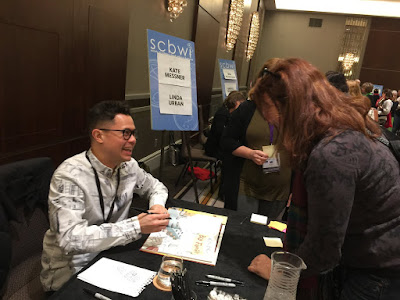 |
| Mike Curato |
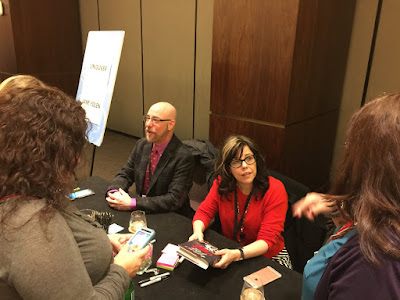 |
| Martha Brockenbrough |
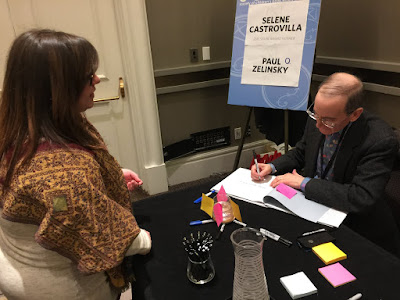 |
| Paul O. Zelinsky |
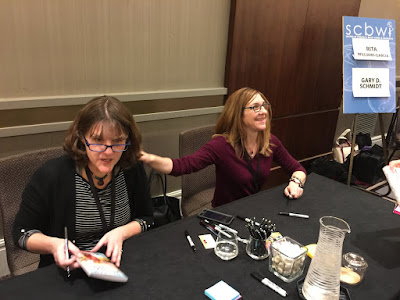 |
| Kate Messner and Linda Urban |
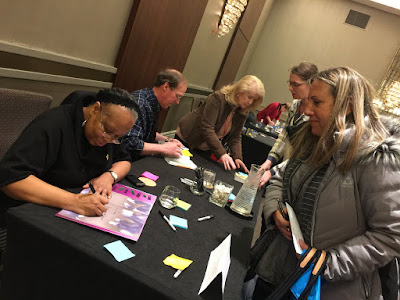 |
| Rita Williams-Garcia |
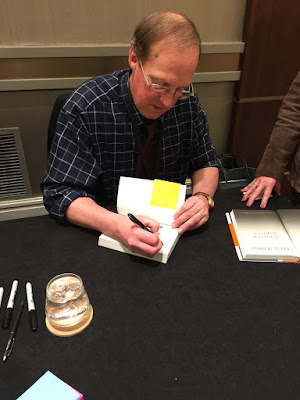 |
| Gary D. Schmidt |
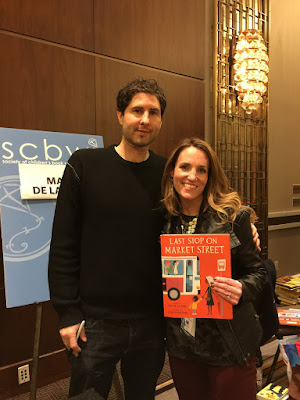 |
| Matt de la Pena |
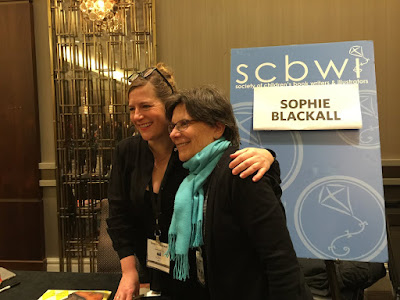 |
| Sophie Blackall |
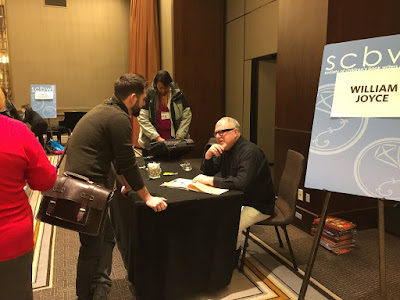 |
| William Joyce |
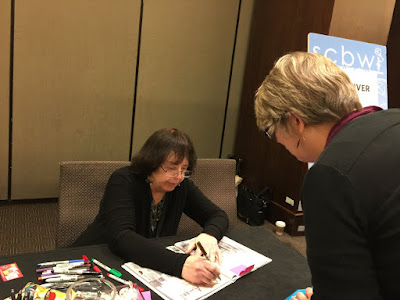 |
| Jane Yolen |
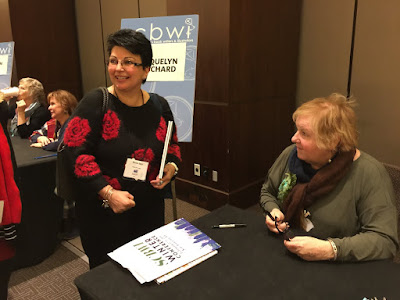 |
| Lin Oliver |
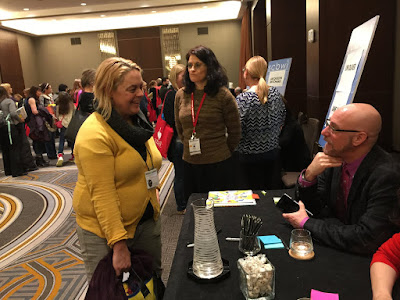 |
| Arthur Levine |
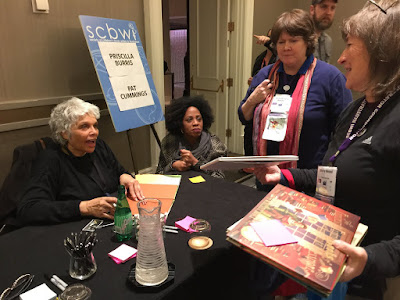 |
| Pat Cummings |
Lin Oliver introduced Gary Schmidt as not just a writer's writer—but as a writer's writer's writer. Gary has won two Newbery Honors, and all of his books are perfect, literary gems.
The last time Gary was here, he found out his back was bleeding just before he went on stage. Today, he's wearing a dark shirt—just in case.
He started by noting how wonderful it is to gather like this with other writers and illustrators, who generally work alone. "To be with each other is really quite an amazing gift, isn't it?"
Children's writers have the same mission. "We all do our best work for kids. That's why we get along so well."
The writers that he really admires—the writer that he hopes to be—is not just someone who displays the pyrotechnics of class, but the writer who shows up. "The writer who sits down on the log and tells me a story and so everything is different."
Gary comes from a writerly family. His uncle Bradford Ernest Smith wrote "Captain Kangaroo." "Do you know what cachet that has in first grade? Amazing!"
When a character on that show, Mr. Green Jeans, passed away, Captain Kangaroo didn't replace the man. He showed up instead next to the viewer. "He sat on the log. He told us the world is terribly broken."
"He was saying that despite the brokenness of this world, the world is so beautiful."
"This is what the writer for young kids does," Gary said. "Movies and television can fill the consciousness to overflowing. We know they do. Watch any superhero movie. But the writer for kids inspires and stimulates the consciousness to growth and understanding. What an amazing act. What a responsibility."
Gary, who teaches writing each week at a maximum security prison, told us several stories about people whose stories have touched him. One of the writers he volunteers with, Anthony, was 10 years old on 9/11. Now serving a life sentence, Anthony made two drug deals that morning, returns to his apartment, and saw the first plane hit the tower. He went outside to see if there was a plane about to hit his building. "I wished it would," he wrote. "It would have done me a favor."
Empathy was at the heart of his talk. "What ails thee" is a deep question from one heart to another, a question of human empathy. And that's what writers ask their characters and shows their readers.
We also write "to express the understanding that human beings are creatures of great complexity," he said. "Story insists on human complexity and multidimensionality. With story, we live literally in the tangles of our minds."
As writers, we have to believe that everything matters, everything small and large, he said. The curve on the bow of a boat matters. The snow on a mountain top matters. The way someone moves her arm matters. The way a kid wears his hair matters ... Suppose everything matters, everything is a sacrament.
There's a rabbi who says a prayer: "Lord, let the world be here for one more day. My dear friends, be that rabbi. For God's sake, if you're writing of kids, be that rabbi."
 Alessandra Balzer is the Vice President and Co-Publisher of Balzer + Bray, an imprint of HarperCollins, publishing picture books to novels from teens.
Alessandra Balzer is the Vice President and Co-Publisher of Balzer + Bray, an imprint of HarperCollins, publishing picture books to novels from teens.
On the process of acquisitions:
Auctions are rare. Many of B+B's favorite books come traditionally. If Alessandra loves a book, she shares it with her team and they look at it closely. If the team is on the same page, she brings it to the acquisitions board. Many details are looked at in the meeting and it's approached as a business decision.
On coping with losing something you love:
It is what it is. You do your best. If you don't get it, you move on.
Do you ever offer notes on a manuscript before making a decision?
It depends. When it's done, there's no guarantee, and a lot of time is put into it. Alessandra has done it when it's worked out, and she's done it and then had to reject the project.
On deal-breakers in a offer:
As an editor it's difficult because there is a passion part and a business part. It can be helpful when the house has a policy when it comes to contracts which can take some challenges away because certain pieces don't need to be negotiated.
On junior-level editors taking on projects:
When a more junior level editor brings a proposal to an acquisitions meeting, the rest are behind them and advocating for the project as well.
Final thoughts:
Do your best work, and don't write to what's selling or to trends. Write your passion.
View Next 25 Posts

















